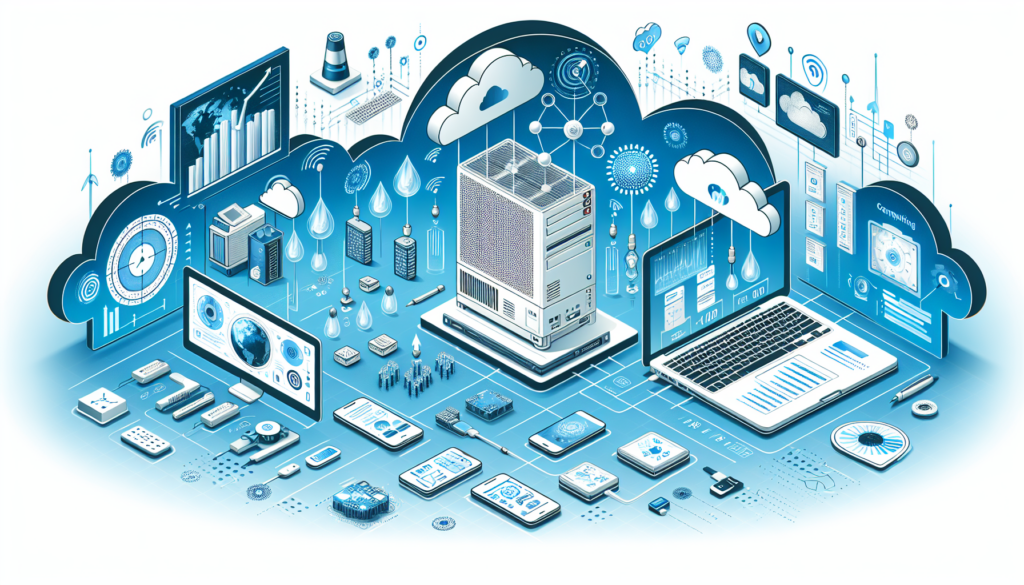In the hurried race towards digitalization, edge computing has emerged as a cornerstone for the current Internet of Things (IoT) paradigm and real-time data analysis. This computational approach decentralizes data processing by placing computing resources closer to where they are needed, resulting in speed, efficiency, and new paradigms of privacy and security. Analyzing this revolution implies a comprehensive understanding of distributed systems, communication networks, smart devices, and, of course, the immense variety of applications that benefit daily from these advancements.
Technical Fundamentals of Edge Computing
Theory and Architecture
Edge computing represents an IT architecture that aims to optimize cloud computing systems by bringing data processing closer to the point of creation and use. This involves a sophisticated design of infrastructures that includes edge servers, IoT devices, and networks that communicate with each other to process and analyze data locally, sending only the data that requires more intensive processing or long-term storage to the cloud.
Emerging and Converging Technologies
The technologies converging at edge computing range from microdata centers, software-defined networks (SDN), fog computing, to artificial intelligence and machine learning. Together, these technologies enable smarter and more autonomous systems that can make critical decisions on site, such as image processing in drones for the immediate identification of people or objects in emergency situations.
Impact and Applications in IoT and Data Analysis
Latency Optimization
One of the major benefits of edge computing is the significant reduction in communication latency. This is critical in IoT applications where response time is essential, such as early warning systems in monitoring critical industrial facilities or in autonomous vehicles, where milliseconds can mean the difference between a safe maneuver and an accident.
Bandwidth Efficiency
The ability to process data locally before sending only relevant information to the cloud helps conserve bandwidth. This translates into greater network efficiency and a reduction in costs associated with data transfer and cloud storage.
Resilience and Operational Continuity
Edge computing distributes data processing points, contributing to greater network resilience. This means that in the event of a network section failure, edge nodes can continue operating autonomously, ensuring the continuity of critical services and systems.
Data Security and Privacy
On the other hand, by processing the data close to its point of generation, there is less exposure of sensitive information to potential attacks during transmission. In addition, this aligns with privacy regulations such as GDPR, as data can be analyzed and/or anonymized locally before being transmitted or stored elsewhere.
Advances and Case Studies
Innovations at the Edge
Advances in specific hardware, such as ultra-low power processing chips or those specialized in AI tasks, are enabling edge computing to become more powerful and energy-efficient. The integration of 5G networks, for example, is an essential complement to edge computing, as these networks offer the ultra-low latency and high bandwidth needed for real-time IoT applications.
Real-World Application Cases
A notable example is the use of edge computing in the manufacturing sector, where sensors and devices connected to the production line provide real-time monitoring, allowing immediate adjustments and maintenance predictions based on data harvested on-site.
Another case is in smart farming, where the implementation of edge computing on farms allows for the collection and processing of data on soil, crops, and climate on the spot, leading to a more efficient use of resources and significantly improving yields.
Looking Towards the Future
The intersection between edge computing, IoT, and data analysis is a fertile area for innovation. With the growing proliferation of smart devices, being at the edge of the network is to be at the forefront of the future. Ongoing research is focused on improving artificial intelligence algorithms to work more efficiently on edge devices, enhancing the security of devices at the network edge, and developing new architectures that can manage the growing amount of data generated by IoT devices.
With the rise of edge computing, we are moving towards a more autonomous Internet of Things, capable of more sophisticated operations and autonomous decisions in virtually any environment. It is a horizon filled with possibilities where speed, security, and efficiency converge to create technological solutions previously unimaginable.

